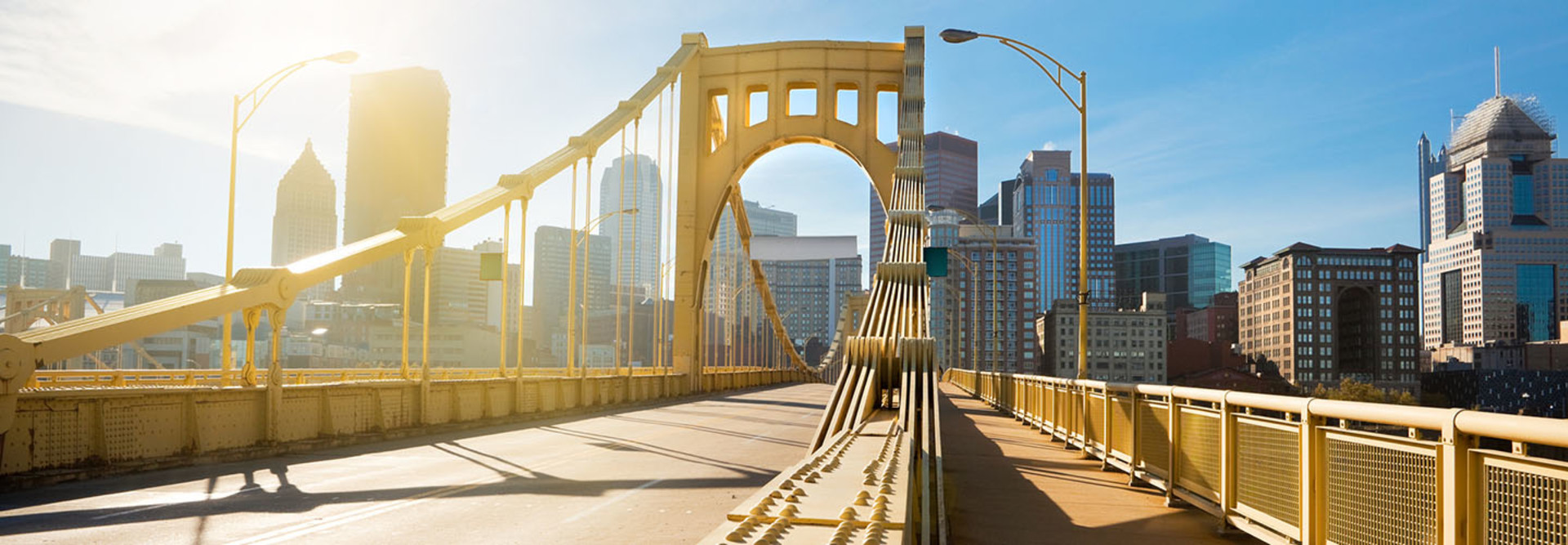Pittsburgh Taps Tech to Tackle Road Infrastructure Challenges
Anyone that’s ever driven through Pittsburgh knows it’s not an easy affair.
With a litany of bridges, hills and grid-less city intersections, commuters are steadily adding an average of 81 hours of time to their commute each year.
But with advancements in transportation technologies enabled by connected devices and furthered by local and statewide transportation departments that are supportive of technology initiatives, the city could be headed for a bit of relief.
SIGN UP: Get more news from the StateTech newsletter in your inbox every two weeks
AI Traffic Lights Cut Pittsburgher Commutes
If you’re tired of waiting at lights, you’re not alone. But a new artificial intelligence–enabled traffic system called Surtrac could make that a thing of the past.
The system, which launched initially as a project at Carnegie Mellon University and eventually became a company called Rapid Flow Technologies, allows traffic lights to break free of their pre-programmed cycles and adapt dynamically to traffic conditions.
And it’s cutting commute times down in huge numbers. The system has been installed at 50 intersections to date and, where it has been installed, it’s reduced travel time by 25 percent, braking by 30 percent and idling by more than 40 percent, Smart Cities Dive reports.
According to Smart Cities Dive, the system relies on predictive modeling to allow each intersection to prepare for incoming traffic:
First, hardware, including a computer, camera or radar device, is installed at the intersection. Surtrac can then see cars that are coming to the intersection from all directions. The computer runs a predictive model and uses it to generate a signal timing plan in real-time. The processing is done in a way that, through communication with downstream models, builds a local plan from multiple data sources.
Already, the city has planned to add the technology to 200 of the more than 600 intersections in Pittsburgh. And it’s moving outside of Pittsburgh into cities like Atlanta and Beverly Hills, Calif., as well as King County, Ill.
Moreover, Steve Smith, a robotics professor at Carnegie Mellon and the head of Rapid Flow Technologies, tells Smart Cities Dive that as cars become even more connected and begin to share information from technologies like dedicated short-range communications (DSRC) radios or navigation devices, vehicles could move through traffic 20 percent faster.
"It sounds like magic," Smith tells the site. "But once the world gets connected, we will know where cars are continuously."
3D Modelling Enables Structural Bridge Audits
New technology is also helping the city better manage its roads and structures. A new 3D modeling company called Kaarta, facilitated by the city’s startup incubator, PGH Lab, is developing real-time 3D modeling tech that helps the city prioritize and manage bridge repairs, StateScoop reports.
In a metropolitan area where 30 percent of the 1,100 bridges are “structurally deficient,” according to a 2011 study, the city can access the modeling technology via the cloud and use it to identify which bridges are in need of repair. The tech can also help the city manage its massive amount of tree cover.
And while the potential impact of the technology is still being fully understood, it may not have been possible at all without the help of the city-run startup incubator.
"Before PGH Lab, there wasn't a [framework for government to connect directly to] startups in Pittsburgh," Annia Aleman, a civic innovation specialist with the city's Department of Innovation and Performance, tells StateScoop. "Cities need that platform where they can test. It's a win-win situation where they can test new technologies and our staff can see what kind of solutions are out there for us that we might be able to use later on in the future."









